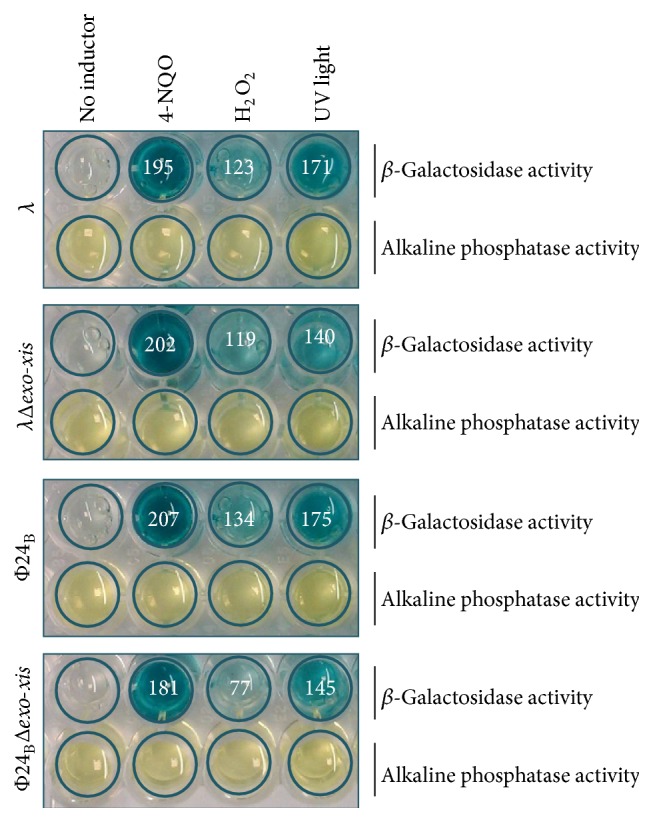Figure 4.

Induction of the S.O.S. response in E. coli PQ37 lysogenic with λ, λΔexo-xis, Φ24B, or Φ24BΔexo-xis, treated with 4-NQO (4-nitro-quinoline oxide, positive control), H2O2 (1 mM), or UV (50 J/m2), using the SOS ChromoTest. β-Galactosidase activity (identified by the blue spots) represents induction of the S.O.S. regulon. Alkaline phosphatase activity (identified by yellow spots) evaluates viability of tested bacteria. Quantification of β-galactosidase activity was performed by densitometry, using the ImageJ software (available at http://imagej.nih.gov/ij/index.html). The results (in arbitrary units reflecting value = 1 ascribed to samples with no inductor), presented as numbers inside the corresponding spots, are mean values from three measurements (with SD < 10% in each case). All these values were significantly (p < 0.001 in t-test) higher than that in the control experiments with no inductor. When Δexo-xis mutants were compared to wild-type phages, the only significant difference (p < 0.05 in t-test) occurred between Φ24B and Φ24BΔexo-xis lysogens induced with hydrogen peroxide.
